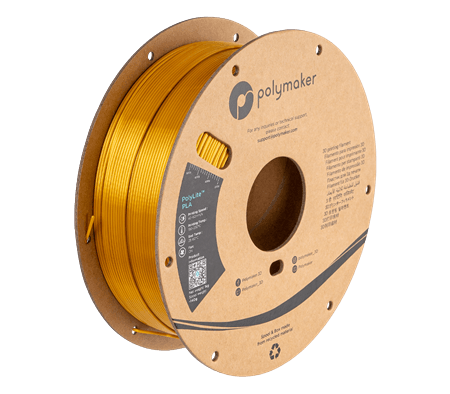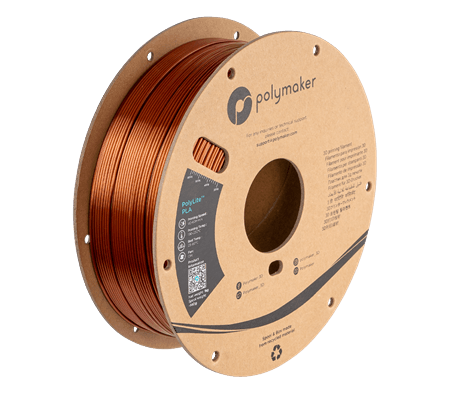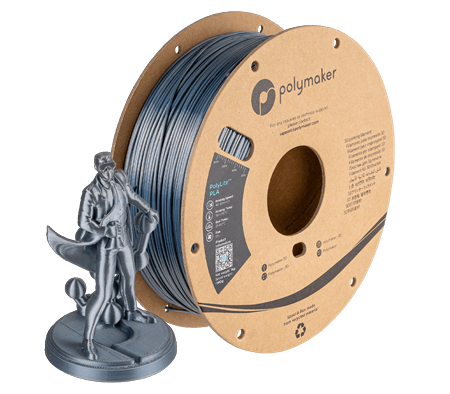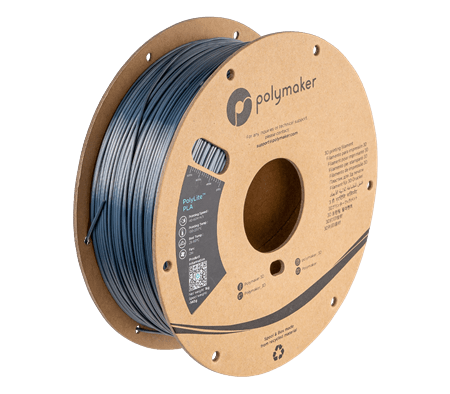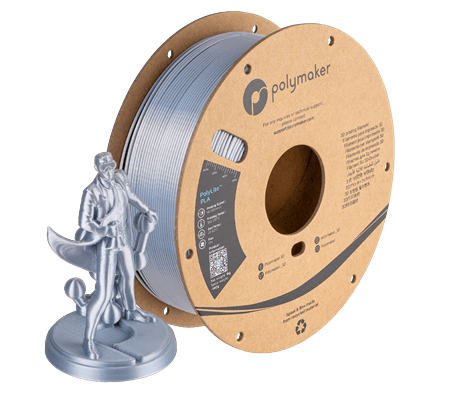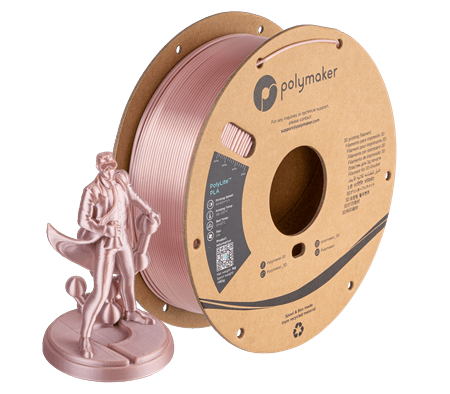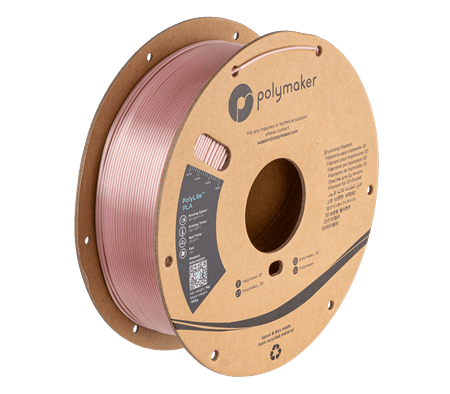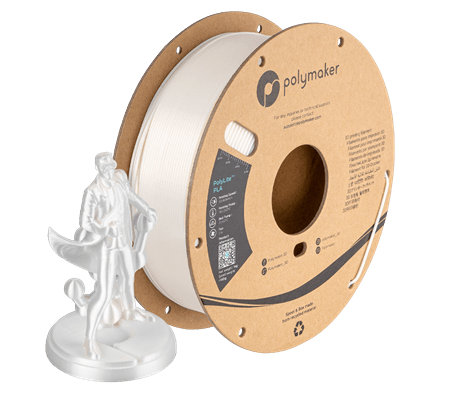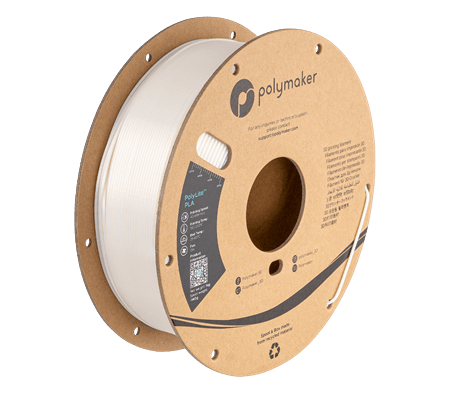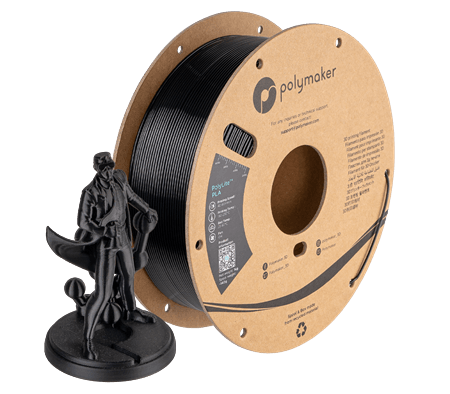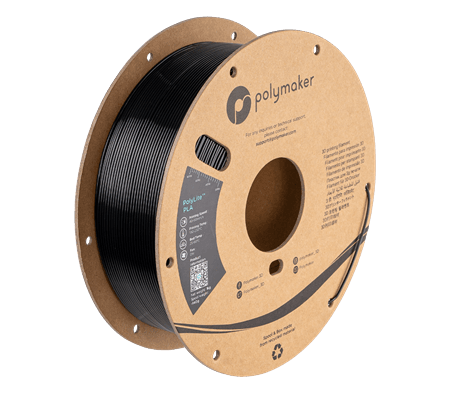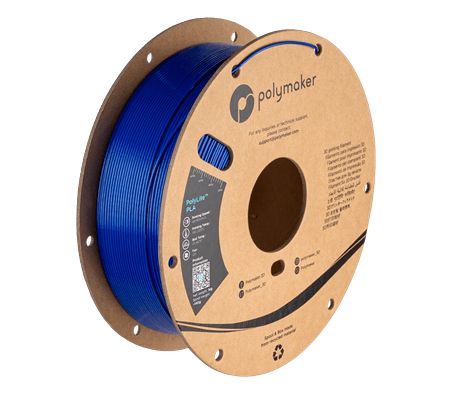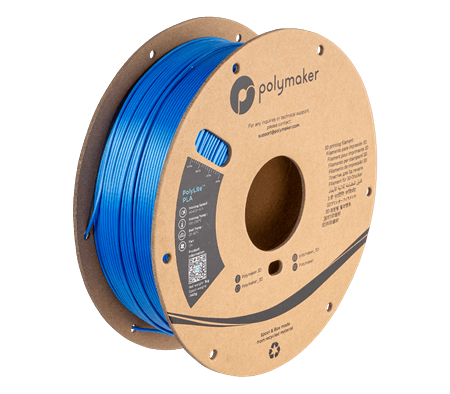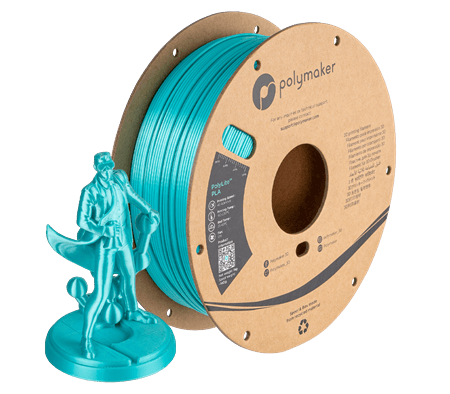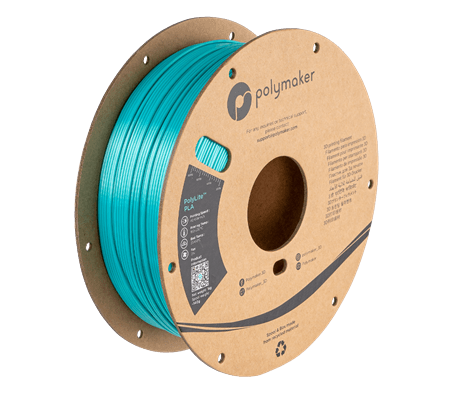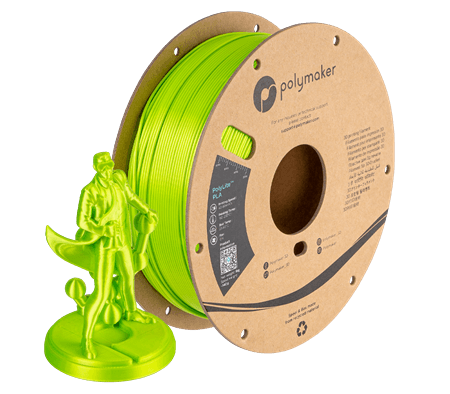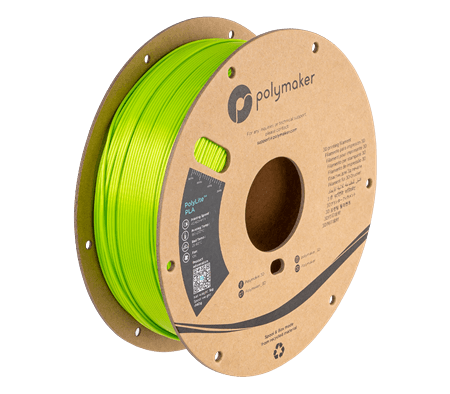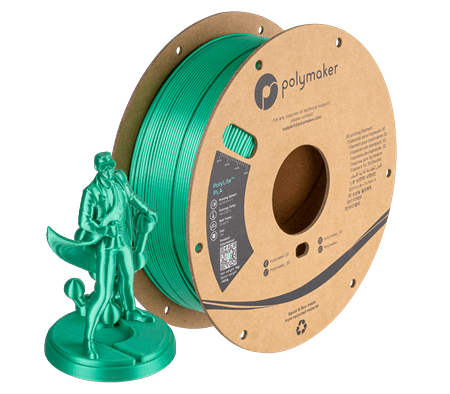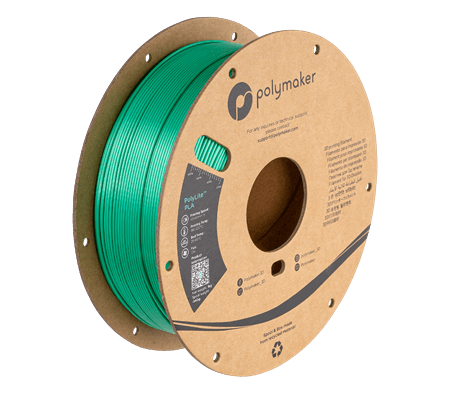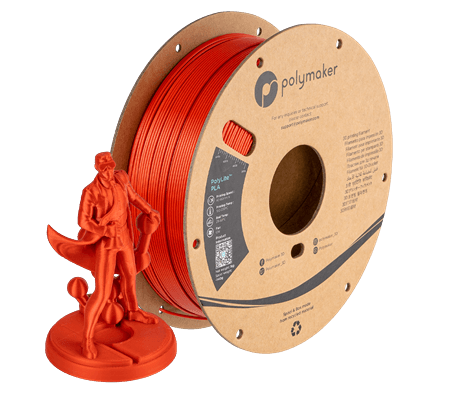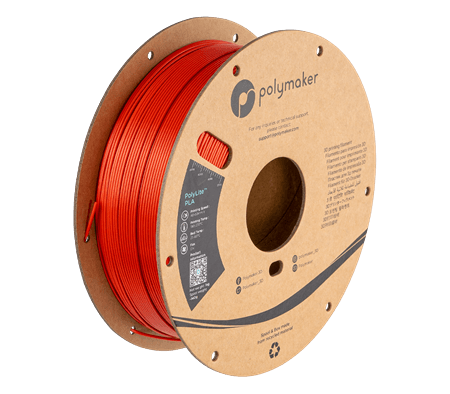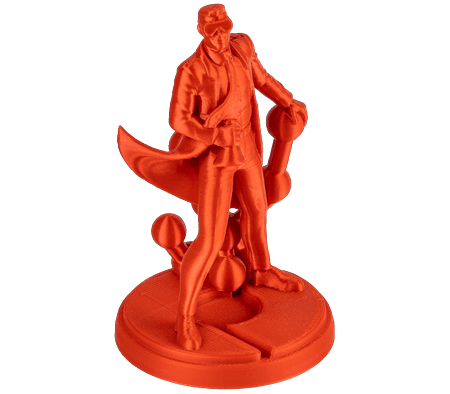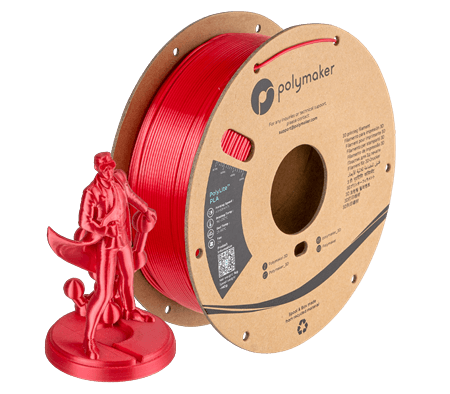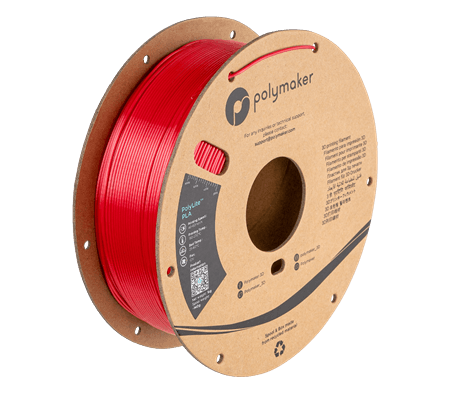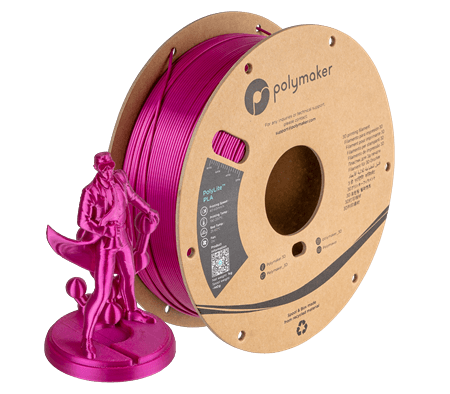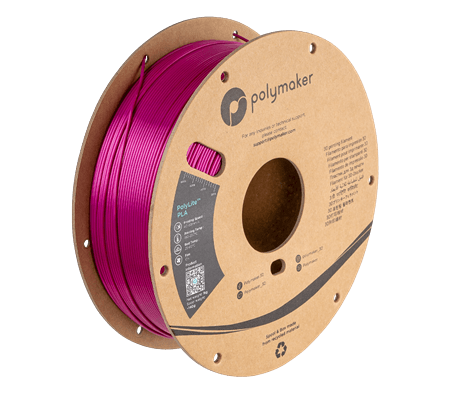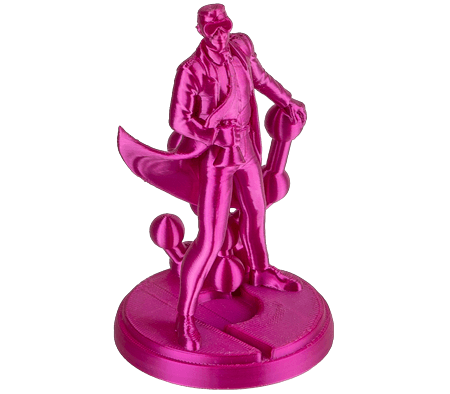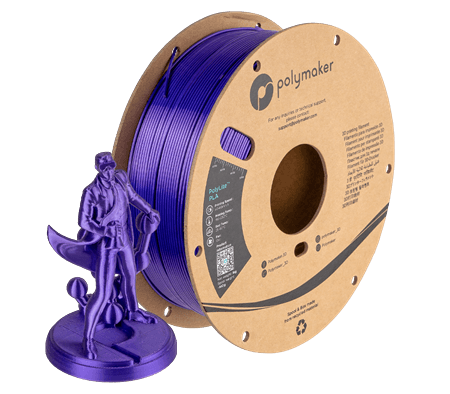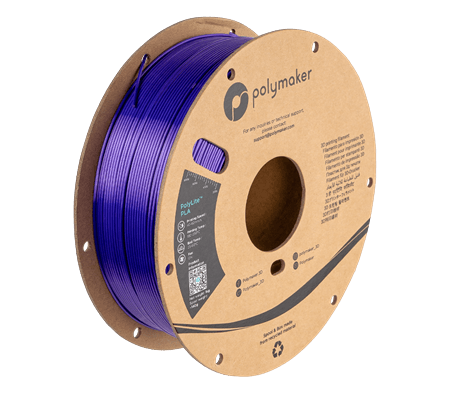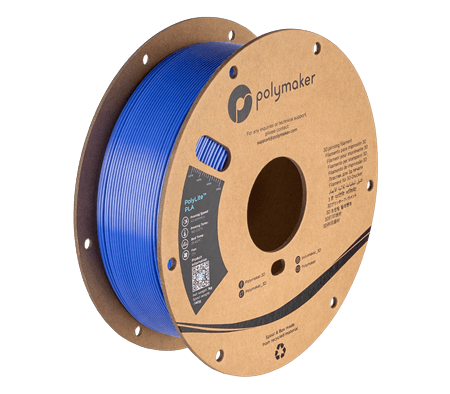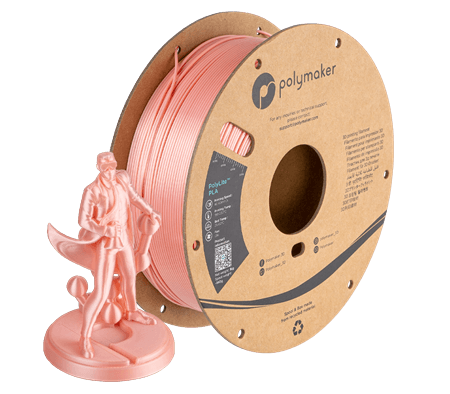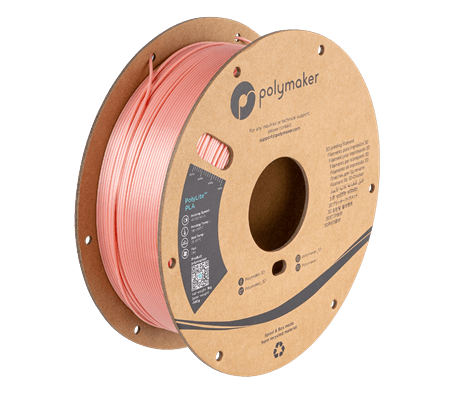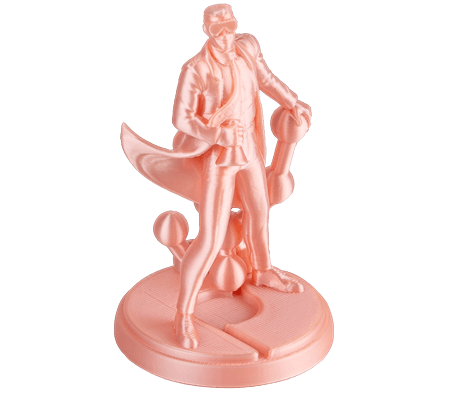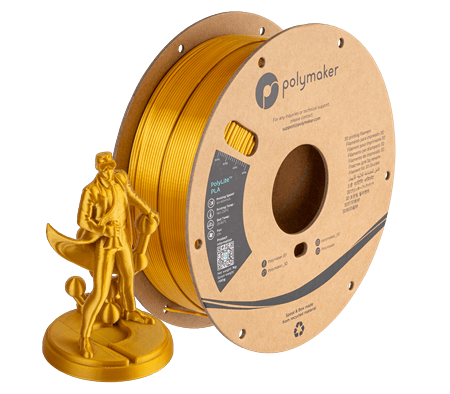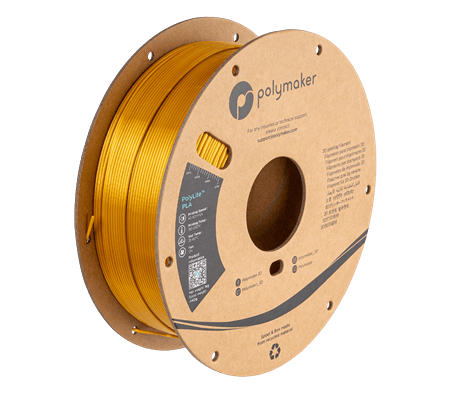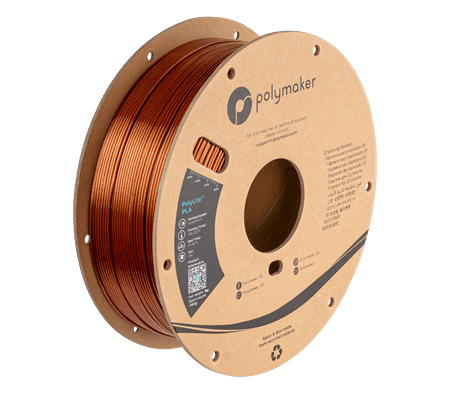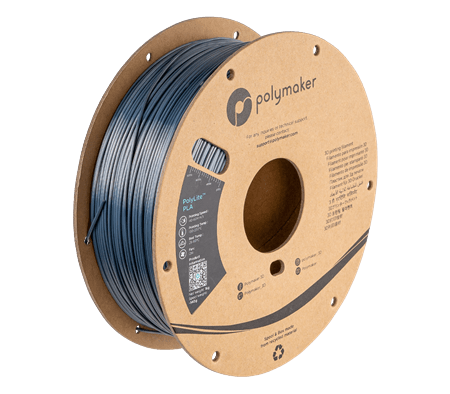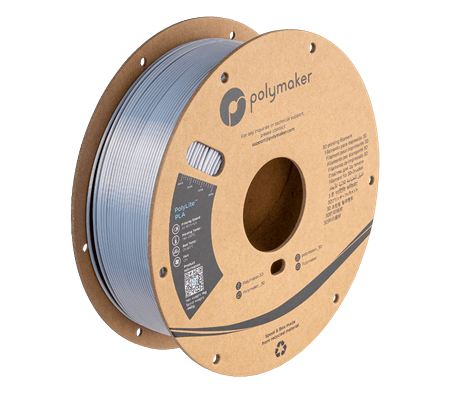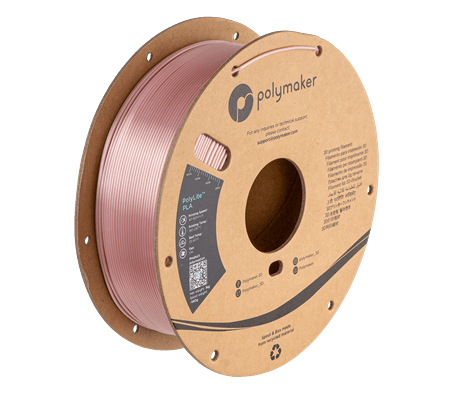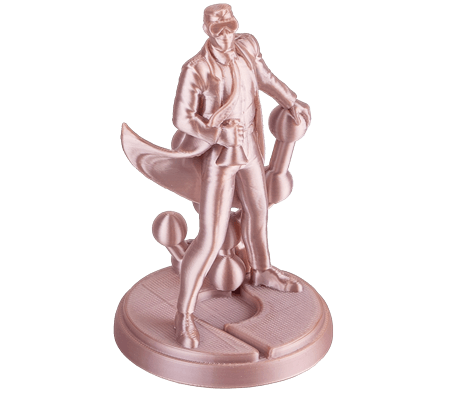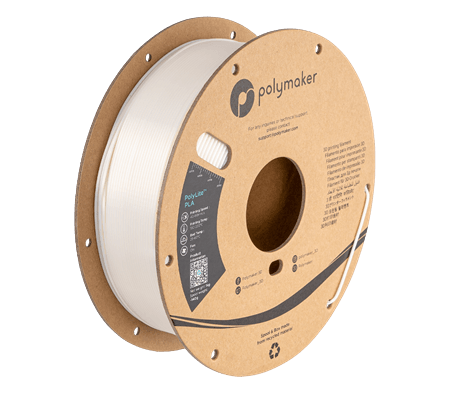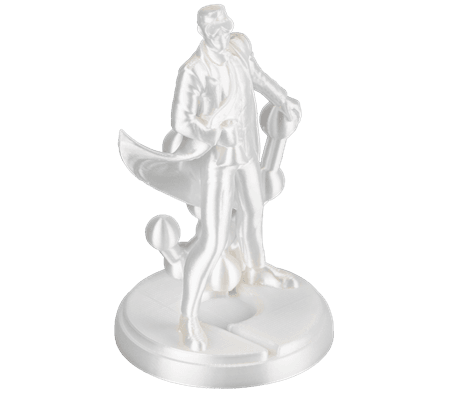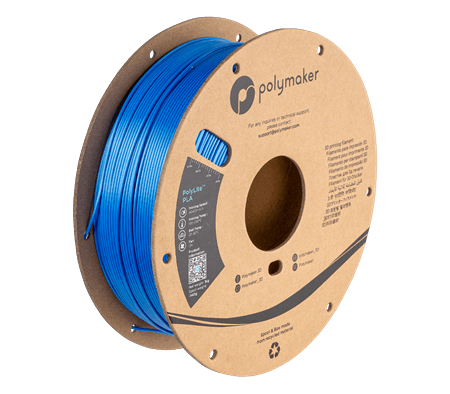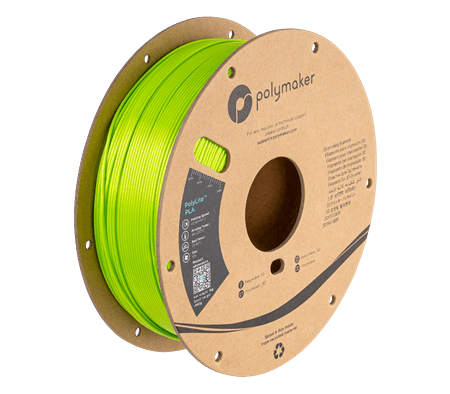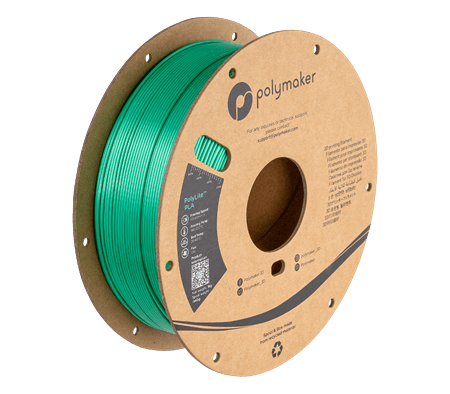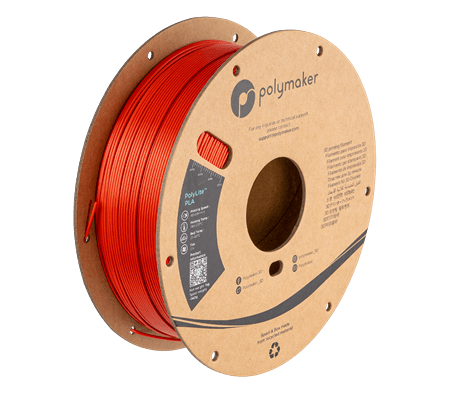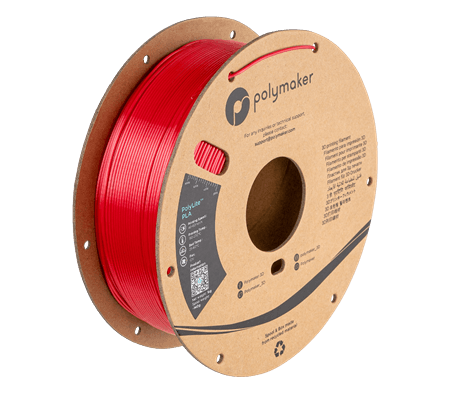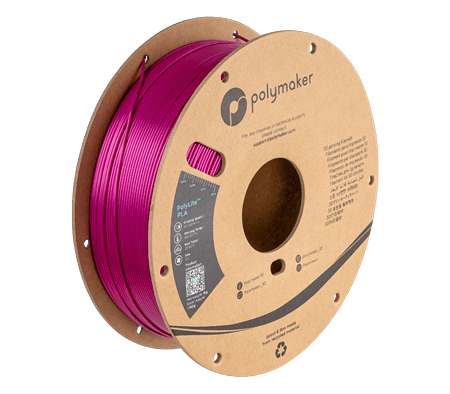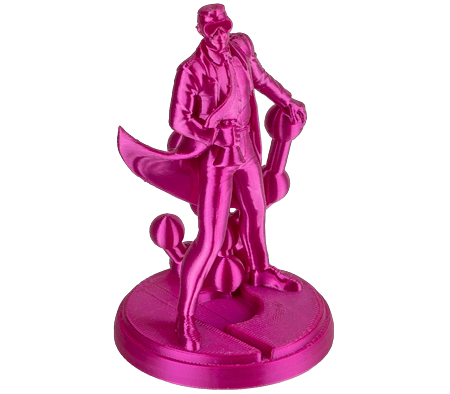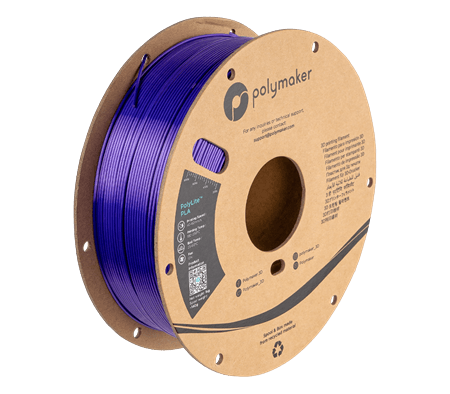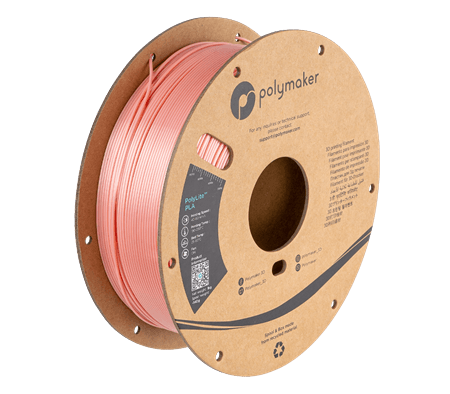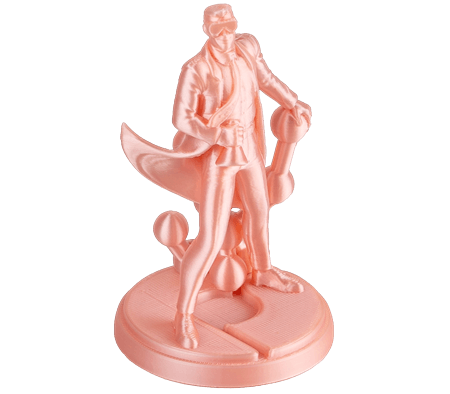Polymaker
Polymaker PolyLite Silk PLA 1kg 1.75mm Filament
Polymaker PolyLite Silk PLA 1kg 1.75mm Filament
Out of stock
Couldn't load pickup availability
Polymakers glossy Silk PLA made with the highest quality raw materials - Ingeo® PLA from Natureworks.
- High quality Polymaker Silk PLA.
- Glossy and silky surface finish.
- Easy-to-print.
- Cardboard spool & packaging (made from 100% recycled cardboard)
- Consistent colour and tolerance (1.75mm diameter +/- 0.03mm)

PolyLite™ is a family of 3D printing filaments made with the best raw materials to deliver exceptional quality and reliability. PolyLite™ covers the most popular 3D printing materials to meet your everyday needs in design and prototyping. PolyLite™ PLA Silk is a unique and easy-to-print filament that produces parts with a special silk-like and metallic surface finish that hides the layers.
Features
-
Silk Surface Finish - PolyLite™ PLA Silk has been formulated to render parts with an incredible glossy silk-like surface finish with no post-processing required. Its unique surface finish makes it an attractive choice for stand out display models or aesthetic applications that require a vibrant or metallic surface finish.
-
Compatibility In Mind - PolyLite™ PLA Silk is an easy-to-print filament and compatible with a wide range of popular extrusion based 3D printers[1]. (Heated bed may be required in some cases).
-
Easy to Print - PolyLite™ PLA Silk works well with common printing surfaces such as the blue tape, Kapton tape, glass, BuildTak, etc. No heated bed required but can be used for better results (up to 60°C).
-
Uncompromised Quality - PolyLite™ PLA Silk filament is made with the highest quality ingredients including Ingeo® from Natureworks. Natureworks is a world-leading biopolymers supplier based in the USA with a portfolio of high quality raw PLA materials produced from rapidly renewable plant resources. Combining Polymakers innovative R&D technologies, compounding and extrusion systems with Natureworks Ingeo® resins produces a reliable 3D printing filament to print beautiful and accurate models
[1] Please note it's not possible to make a Silk PLA filament with resistance to heat creep; this is why PolyLite™ PLA Silk does not feature the Jam-Free™ technology implemented in other PolyLite™ PLA filaments. This may affect compatibility with printers that suffer from heat creep and for these users we recommend considering a PLA filament which features Jam-Free™ technology.
Printing Settings
| Nozzle Temperature | 190°C - 230°C |
|---|---|
| Build Plate Temperature | 25°C - 60°C |
| Build Surface Material | Works well with most build surfaces i.e Glass, Blue Tape, BuildTak® |
| Build Surface Treatment | Typically none required. Some surfaces work well with Magigoo or PVA glue stick. |
| Cooling Fan | ON |
| Printing Speed | 40 mm/s - 60 mm/s |
| Recommended Support Material | Single Extrusion: Self Support Dual Extrusion: PolyDissolve™ S1 or PolySupport™ |
The above are printing recommendations based on 0.4 mm nozzle. Please note ideal printing conditions may vary depending on your 3D printer setup. For high speed 3D printers, make sure to increase your extrusion temperature in order to use higher printing speeds.
Tips for printing Silk PLA filament
1. It's not recommended to use Silk PLA on printers which suffer from heat creep.
2. Under "normal" speed conditions Silk PLA should print with a high gloss however with high printing speeds Silk PLA may not melt correctly resulting in a dull or inconsistent surface finish. Using a slower speed for perimeters, limiting volumetric flow to 8 cubic mm/s and trying a slightly higher nozzle temperature can help.
For other tips printing PolyLite™ PLA Silk, feel free to contact us!
Specification
| Net Weight | 1kg |
|---|---|
| Material Type | Silk PLA |
| Density | 1.20 (g/cm3 at 21.5˚C) |
Compatibility
PolyLite™ PLA Silk has been engineered with compatibility in mind to print excellently on a wide range of 3D printers. Although PolyLite™ PLA features Jam-Free™ technology it is not possible to implement this technology in silk filaments such as PolyLite™ PLA Silk.
Of course with thousands of unique 3d printer models on the market, we can't guarantee each filament type will work with every 3D printer. Slicer experience and setting adjustment is always required to get the most out of a material. Before jumping into an ambitious project we always recommend printing some known calibration tests to build or make adjustments to the filament profile.
If your printer suffers from heat creep and has difficulty printing other brands of PLA or Silk PLA due to heat-creep related jamming, PolyLite™ PLA Silk may risk jamming on your extruder.
Technical Data
All testing specimens were printed under the following conditions: Nozzle Temperature = 220˚C, build plate temperature = 40˚C, infil = 100%, cooling fan = ON
All specimens were conditioned at room temperature for 24h prior to testing.
THERMAL PROPERTIES
| Value | Testing Method | |
| Glass Transition | 56°C | DSC, 10°C/min |
| Heat Deflection Temperature |
0.45MPa - 61.1°C HDT Curve |
ISO 75 |
| Vicat Softening Temperature | N/A | ISO 306, GB/T 1633 |
MECHANICAL PROPERTIES
| Value | Testing Method | |
| Youngs Modulus (X-Y) |
3098 ± 147 MPa | ISO 527, GB/T 1040 |
| Tensile Strength (X-Y) |
51.5 ± 1.9 MPa | ISO 527, GB/T 1040 |
| Bending Strength (X-Y) |
104 ± 1.3 MPa | ISO 178, GB/T 9341 |
| Charpy Impact Strength (X-Y) |
3.46 ± 0.32 kJ/m2 | ISO 179, GB/T 9343 |
We have full MDS and technical data sheets for PolyLite™ PLA Silk and all other Polymaker products. Contact us to enquire!
The typical values presented in Polymakers data sheet are intended for reference and comparison purposes only. Due to the nature of 3D printing they should not be used for design specifications or quality control purposes.
STORAGE & DRYING
All plastics are hygroscopic meaning they absorb moisture from the air which can affect printing quality and strength of printed parts. How quickly this absorption occurs depends on the material and your environment. Polymakers PolyLite™ Silk PLA filaments are dried and packaged in a vacuum sealed bag with desiccant to ensure the best printing quality. When not in use PolyLite™ Silk PLA should be stored away from sunlight and sealed in the packaged resealable bag.
Although filaments can be dried, drying will speed up the aging process of the plastic making it more brittle over time. Preventing the filament from absorbing moisture in the first place is the best solution to keep your filament working to its maximum potential. For long term storage we highly recommend storing in a sealed container with dry desiccant that reduces the relative humidity to 10-20% RH.
In-house we manage our filaments with Polymakers PolyDryer™ which keep offers best-in-class sealing to protect filaments from absorbing moisture
If you hear popping sounds and notice that the surface quality of your print is uneven or the colour is not consistent, this is a likely indicator that the filament has absorbed too much moisture. Spools of PolyLite™ Silk PLA can be dried with Polymaker PolyDryer™ using power level 1. Alternatively if you have a convection oven that is accurate at low temperatures, users can dry filament in a preheated convection oven at 55˚C for up to 6 hours. Results may vary depending on the accuracy of your oven so please be conservative. For more information about filament drying please read our user guide.
FAQ
Q: Does PolyLite™ PLA Silk feature Jam-Free™ technology?
A: To achieve the silk surface finish, PolyLite™ PLA Silk does not feature the Jam-Free™ technology implemented in PolyLite™ PLA and other Polymaker PLA filaments.
Q: Can PLA be printed at large scales without warping?
A: One of the benefits of PLA is the ability to print large parts with excellent dimensional stability; we have many customers printing large full-size printing projects in PolyLite™ PLA Silk. Please note that while PLA materials don't warp in most situations, printing with poor first layer adhesion can cause any material to warp and printing or the heated bed too hot can cause any PLA filament to crystallize rapidly, creating internal stress and warping.
Q: What support materials can I use with this product?
A: Polymaker’s PolyDissolve™ S1 or PolySupport™ filament are the recommended support filaments for PolyLite™ PLA Silk. If your 3D printer is not equipped for multi-material, self-support can be used.
Q: Should I rewind this filament if I want to use it with a different spool?
A: We strongly advise against tampering with the product by rewinding. See our article for full details about the risks. All Polymaker filaments are wound with tension but without strain. Rewinding completely rearranges the curvature of the winding and this strain over time can cause most plastics to catastrophically break. If for some reason your printer is locked into fitting less than standard sized spools, there may be safe printable adaptors or external mounting solutions available.
Don't know where to start? Or which filament will suit your application? We have a broad range of support options including telephone support. Contact us today!
| Filament | |
| Diameter | 1.75mm |
| Spool Weight | 1kg |
PolyLite™ Silk PLA is a popular special effect PLA for users looking to print sleek and stand out models without arduous post-processing. The glossy surface finish of PolyLite™ Silk PLA enables printing of models with a glossy silk or metallic surface finish and looks great for single colour prints or multi-colour designs that assemble a combination matte and silk PLA 3D parts.
It is commonly used to print a wide range of general printing projects including:
- Figurines.
- Toys.
- Decorative models and vases.
- Custom trophies and medals.
- Shiny gifts for friends and family.
- Accent colour for assembled 3D models.
- Models which require a metallic finish.
- Metallic or glossy cosplay pieces.
- Scale models and architectural models.
Compared to PolyLite™ PLA, PolyLite™ Silk PLA does have slightly different mechanical properties for instance featuring a slightly higher impact resistance (Charpy impact X-Y).
Like other PLA based filaments, Silk PLA does feature a low heat resistance so it's not recommended to print Silk PLA for applications that may be exposed to high temperatures.
Materials
Materials
PLA - This solid filament is used to make models that are a refined representation with rigid properties.
TPU - This flexible filament holds the shape of the model and can with stand being twisted and squashed to survive the field environment.
Shipping
Shipping
Free standard shipping and Express for free orders over $300 calculated at the checkout.
All items are shipped from Townsville, QLD.
Shipping World Wide - coming soon.
Care Instructions
Care Instructions
PLA
Temperature:
Keep it cool! PLA starts to soften at around 60°C (140°F), so avoid placing it near heat sources or leaving it in hot cars.
Sunlight:
Prolonged direct sunlight can cause fading and potential deformation. Try to keep it out of long sun exposures.
Cleaning:
Gently wash with warm water and a bit of mild soap using a soft cloth. No harsh scrubbing, please!
Handling:
Handle with care—avoid excessive bending or dropping it, as PLA is rigid and can crack or break.
Storage:
Store in a cool, dry place to maintain its shape and longevity.
TPU
Temperature:
TPU is built to be flexible, but still avoid extreme or prolonged heat. It’s more resilient than PLA, but unnecessary heat can still degrade it over time.
Sunlight:
Try not to leave TPU items in direct sunlight for too long, as UV rays can fade the colors and slowly affect the material quality.
Cleaning:
Just like PLA, a quick clean with warm water and mild soap works great. Use a soft cloth and don’t be too rough.
Handling:
Enjoy its flexibility! However, even though TPU can bend, continuous stretching or heavy impacts might wear it out faster.
Storage:
Keep it in a cool, dry spot away from harsh elements to maintain its flexibility and appearance.
Share

